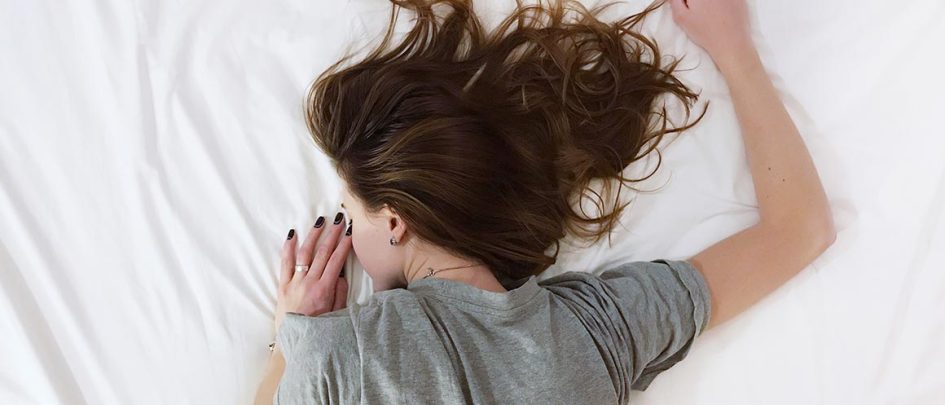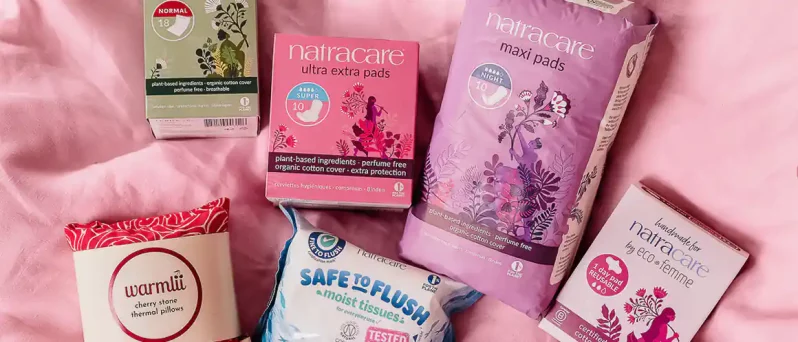For the 1 in 10 of us living with endometriosis, life involves juggling a variety of symptoms every day, while trying to stay on top of pain management, energy preservation, and emotional self-care.
Due to a lack of research into endometriosis, not enough information about it is held within our healthcare systems, so trying to manage endometriosis symptoms is often left to personal trial and error, with no clear indication towards what will help, and what will do harm.
If you suffer from endometriosis, we’ve compiled a list of some of the things that may help to reduce inflammation and pain:
Things that might inflame endometriosis symptoms
Using non-organic period products
Harsh chemicals like dioxins and perfumes in your period products can cause irritation and worsen your endometriosis symptoms. In fact, one study has linked dioxins to the promotion of endometriosis growth. While more research is needed to confirm the suggestion made from the results of this study, switching to organic period products to keep your intimate area chemical-free will always be a better choice for your body, and it could help to reduce your symptoms like pelvic inflammation and irritation, too.
You can read more about chlorine-free bleaching process here.
Have an organic period
We only ever use certified 100% organic cotton and natural materials.
Find out more
Consuming inflammatory foods and drinks
The foods we eat play a huge role in how we feel in life in general – after all, they are where we get all of our nutrients from, which are the building blocks of wellness. If anything is off balance in our diets, we are likely to feel it in our bodies.
This is also applicable to endometriosis. Foods that are considered inflammatory like dairy, alcohol, refined sugar and caffeine could make bloating and cramps worse, so try to minimise your intake of these as much as possible.
Not Slowing Down
Living with a chronic condition like endometriosis can be very frustrating. Sometimes life is put on pause while others around you are able to carry on like normal. This can make it tempting to ignore the pain you’re experiencing and continue living life at high speed. But listening to your body and allowing time to rest is essential for quicker and more effective recovery. It’s okay to cancel plans, call in sick or have an early night – your body will thank you for it.
Things that might help reduce endometriosis symptoms
Heat
When you have pain in your lower abdomen, back, legs, or anywhere else due to endometriosis, heat can really help. Invest in some heating pads or a hot water bottle to help relieve tension and ease soreness. If you have time and access, we also recommend having a warm, relaxing bath to unwind and treat pain across your body.
Plenty of water
Keeping yourself hydrated is another way to help curb bloating and fatigue; two common symptoms of endometriosis. When you’re dehydrated, your body attempts to sort it out by retaining excess water, which can lead to uncomfortable bloating. What’s more, dehydration can make you feel tired because your body is working harder than usual to continue functioning properly with less resources. On days where you have a swollen endo belly, or maybe your fatigue is worse than usual, dehydration might be a factor. Carry a water bottle with you and make sure you’re getting at least two litres a day.
Vegetables and fatty acids
Just as the foods you eat can have a negative impact on the symptoms that you experience, some foods might help to reduce or counteract them. Studies have shown that consuming foods rich in Omega-3, such as salmon, chia seeds, mackerel and flax seeds can help to reduce the pelvic pain caused by endometriosis. Also, if you experience heavy bleeding because of endometriosis, choosing iron-rich foods like leafy greens, beetroot and plain chocolate will replenish your body’s iron levels.
Acupuncture, acupressure and massage
Similar to heat, some people with endometriosis find that treatments like acupuncture, acupressure and massage can help to ease the muscular pain, such as cramps and muscle fatigue. If you’re able to try these as pain management tools, we suggest giving them a go.
Gentle exercise
Whether you take yourself for a run at the start of your day, or do some yoga before bed, moving your body in any way that you’re able will relieve pain by releasing endorphins, which are nature’s painkillers. Dedicating some time to moving and stretching your muscles will help to prevent cramping. Not only are endorphins great for reducing pain, they’re also serious mood boosters, great for maintaining your mental health. Here are some yoga poses that can help to relieve cramps, stretch your muscles and leave you feeling positive.
What’re some of the things you’ve found helpful to reduce your endometriosis symptoms?
Certified Organic
Period Products
Find your nearest store













Great read! This article is incredibly helpful for understanding and managing endometriosis pain. Your comprehensive tips on what helps and hinders are truly appreciated. Thank you!